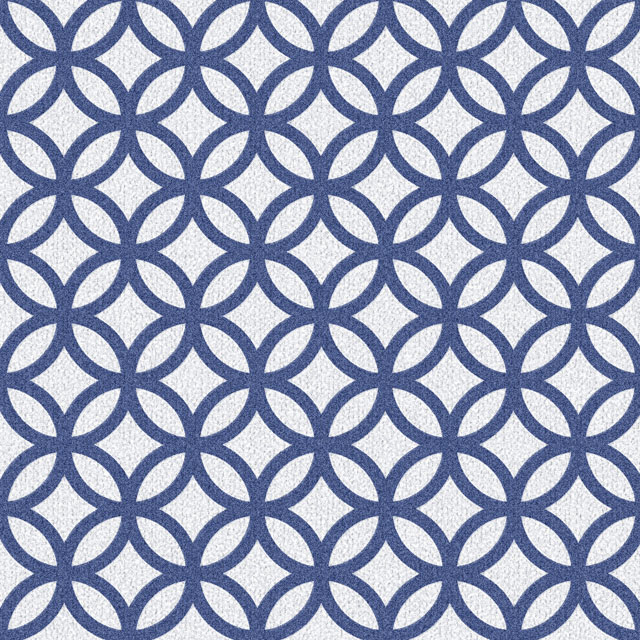| A geometric
design pattern which may be described alternatively as four spindles arranged
in a circle with ends touching, or as overlapping circles enclosing diamonds
or stars. The original meaning of *shippou
七宝 is seven treasures, which included gold, silver, lapis lazuli, agate,
pearl, coral and crystal, and it is supposed that from this the multi-colored
art of cloisonne got its name, shippouyaki 七宝焼. Some scholars believe
that the design was given its name because it was often used in cloisonne
work; others say that there is no proof to support such a conclusion. Its
earliest appearance in Japan is on fabrics preserved in *Shousouin
正倉院 repository in Nara (756); it is found later in cut gold *kirikane
切金 designs in Heian period Buddhist pictures. By the Edo period it was being
used on porcelain, metalwork, woodwork and lacquer, often in combination
with other designs. It was also popular on women's kimono 着物, as
can be seen in surviving woodblock prints *ukiyo-e
浮世絵. |

